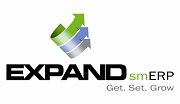“Sure an ERP system is great, but is my data safe on the cloud?”
Due to common misconceptions, and with wide spread myths about cloud storage some companies remain hesitant to move forward into the future.
The cloud enables greater transparency and accessibility, rapid deployment of the software across the company and seamless scaling of business functions to meet market changes. There have been a number of high profile attacks on company data in the past year, a case in point being Sony. These stories are bound to make some hesitant about switching to the cloud.
These are the top buyer misconceptions when it comes to cloud ERP system:
These are the top buyer misconceptions when it comes to cloud ERP system:
1. Cloud data is more prone to attack
An ERP vendor has more expertise on data security than the average enterprise engaging its services. The physical location of the server, be it on company premises or within a cloud provider’s data center, has little relevance on the server’s potential vulnerability. The data’s security relies less on the physical location of the server and more on the security measures implemented by the center. Companies with on premise ERP have the added responsibility of maintaining its server’s security and maintenance. The generally superior to that of the average enterprise. Thus purely in terms of data security, the cloud system is the better option for most small and medium sized enterprises.
2. Data Residency Control
Many countries have regulations that restrict personal or sensitive data to be exported or stored in a different country. Companies that fear that their data and records may be outsourced without their consent can rest east knowing that there are legislative restrictions to prevent that. By choosing a reputable and reliable ERP vendor who is transparent about the internal and external policies governing the relationship, the firms can be assured that their data is in reliable hands and rest easy.
3. Rival firms with the same vendor can hack and sabotage
A persistent but unfounded concern is that a cloud based system that houses the data of multiple firms is inherently more susceptible to data hacks, leaks and attacks. In a cloud system, firms share a pool of network and storage resources, which brings about this fear, because in the business world, sharing is not about caring. Firms can be assured that the cloud providers segment and secure the servers and resources in such a way that essentially each company’s data is in their own private space, completely detached and inaccessible for others.
4. No Cloud, No Worries!
A firm that has not opted for a cloud ERP system may smugly assume that it is safer. “My data is not stored on the cloud, it is stored on my own computer. I am completely safe!” But if the computers are connected to the internet, the firm is already on the cloud. Given that most, if not all, companies are connected to the internet, no company is perfectly safe from attacks and data theft.
5. Data security is the sole responsibility of the Cloud Provider
The cloud ERP vendor does manage the network security and associated tasks for the firm. However, to rely solely on the vendor for all aspects of data security is a massive folly. Internal data management and confidentiality policies, password policies, employee accessibility, user management and security training of employees are equally, if not more, important when it comes to maintaining data integrity and safety.
There are several reasons to choose a cloud based solution for your business needs. Lower costs, greater accessibility and flexibility are some of the many reasons that firms are increasingly opting for cloud-based ERP. The common myths and misconceptions regarding data security on the cloud are more fiction than fact. Enterprises looking for a suitable ERP system can be rest assured that the cloud options are safe.
A firm that has not opted for a cloud ERP system may smugly assume that it is safer. “My data is not stored on the cloud, it is stored on my own computer. I am completely safe!” But if the computers are connected to the internet, the firm is already on the cloud. Given that most, if not all, companies are connected to the internet, no company is perfectly safe from attacks and data theft.
5. Data security is the sole responsibility of the Cloud Provider
The cloud ERP vendor does manage the network security and associated tasks for the firm. However, to rely solely on the vendor for all aspects of data security is a massive folly. Internal data management and confidentiality policies, password policies, employee accessibility, user management and security training of employees are equally, if not more, important when it comes to maintaining data integrity and safety.
There are several reasons to choose a cloud based solution for your business needs. Lower costs, greater accessibility and flexibility are some of the many reasons that firms are increasingly opting for cloud-based ERP. The common myths and misconceptions regarding data security on the cloud are more fiction than fact. Enterprises looking for a suitable ERP system can be rest assured that the cloud options are safe.
Contributor : Vidushi













